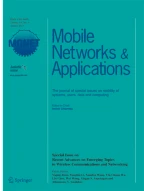Abstract
As the key information of vehicles, vehicle logo can assist in completing the identification of vehicle information. Therefore, the task of vehicle logo detection is of great practical significance. The existing object detection systems for vehicle logo detection cannot account for the detection accuracy of large and small-scale objects. Moreover, the accuracy of these methods can be further improved. In this study, we propose a new approach called multi-scale vehicle logo detector (SVLD), which is based on SSD. This method obtains better results than the current detection methods by setting the parameters of the preset boxes, changing the pre-training strategy, and adjusting the network structure. Experiments show that the proposed approach is better for multi-scale vehicle logo detection. Vehicle logos with large span size can be clearly detected, and the detection accuracy is substantially improved compared with those of other classic algorithms. For 512 × 512 input, SVLD obtains 3.1% improvement over the conventional methods and achieves a mean average precision (mAP) of 84.8% in the VLD-45 test set.
Similar content being viewed by others
Availability of data and material
No
References
Liu W, Anguelov D, Erhan D, Szegedy C, Reed S, Fu CY, Berg AC (2016) Ssd: single shot multibox detector. Proc ECCV: 21–37
Wang YQ, Liu ZF, Xiao F (2007) A fast coarse-to-fine vehicle logo detection and recognition method. Proc ROBIO: 691–696
Li WJ, Li L (2009) A novel approach for vehicle-logo location based on edge detection and morphological filter. Proc ISECS: 343-345
Psyllos AP, Anagnostopoulos CNE, Kayafas E (2010) Vehicle logo recognition using a SIFT-based enhanced matching scheme. IEEE Trans ITS 11(2):322–328
Girshick R, Donahue J, Darrell T, Malik J (2014) Rich feature hierarchies for accurate object detection and semantic segmentation. Proc CVPR: 580–587
Girshick R (2015) Fast R-CNN. Proc ICCV: 1440–1448
Ren SQ, He KM, Girshick R, Sun J (2015) Faster R-CNN: towards real-time object detection with region proposal networks. Proc NIPS: 91–99
He KM, Zhang X, Ren SQ, Sun J (2015) Spatial pyramid pooling in deep convolutional networks for visual recognition. IEEE TPAMI 37(9):1904–1916
Dai J, Li Y, He KM, Sun J (2016) R-fcn: object detection via region-based fully convolutional networks. Proc NIPS: 379-387
Redmon J, Divvala S, Girshick R, Farhadi A (2016) You only look once: unified, real-time object detection. Proc. CVPR: 779–788
Redmon J, Farhadi A (2017) YOLO9000: better, faster, stronger. Proc CVPR: 6517–6525
Redmon J, Farhadi A (2018) YOLOv3: an incremental improvement. arXiv: 1804.02767
Bochkovskiy A, Wang CY, Liao HYM (2020) YOLOv4: optimal speed and accuracy of object detection. arXiv: 2004.10934
Fu CY, Liu W, Ranga A, Tyagi A, Berg AC (2017) DSSD: deconvolutional single shot detector arXiv: 1701.06659
Zhang SF, Wen LY, Bian X, Lei Z, Li SZ (2018) Single-shot refinement neural network for object detection. Proc CVPR 2018:4203–4212
Lin TY, Goyal P, Girshick R, He KM, Dollár P (2017) Focal loss for dense object detection. Proc ICCV: 2999–3007
Pan C, Yan ZG, Xu XM., Sun MX, Shao J, Wu D (2013) Vehicle logo recognition based on deep learning architecture in video surveillance for intelligent traffic system. Proc ICSSC: 123-126
Huang Y, Wu RW, Sun Y, Wang W, Ding XH (2015) Vehicle logo recognition system based on convolutional neural networks with a pretraining strategy. IEEE Trans ITS 16(4):1951–1960
Xia YZ, Feng J, Zhang BL (2016) Vehicle logo recognition and attributes prediction by multi-task learning with CNN. Proc ICNC-FSKD: 668–672
Liu HM, Huang ZC, Talab AMA (2015) Patch-based vehicle logo detection with patch intensity and weight matrix. J Cent South Univ 12:4679–4686
Ke X, Du PQ (2020) Vehicle logo recognition with small sample problem in complex scene based on data augmentation. Math Probl Eng 2:1–10
Liu RK, Han Q, Min WD, Zhou LH, Xu JQ (2019) Vehicle logo recognition based on enhanced matching for small objects, constrained region and SSFPD network. Sensors 19(20):4528
Zhou LH, Min WD, Lin DY, Han Q, Liu RK (2020) Detecting motion blurred vehicle logo in IoV using filter-DeblurGAN and VL-YOLO. IEEE Trans Veh Technol 69(4):3604–3614
Mao YX, Hao PF (2019) A highway entrance vehicle logo recognition system based on convolutional neural network. Proc ICAIBD: 282-285
Murugan V, Vijaykumar VR, Nidhila A (2019) Vehicle logo recognition using RCNN for intelligent transportation systems. Proc WiSPNET: 107–111
Yu YT, Guan HY, Li DL, Yu CH (2019) A cascaded deep convolutional network for vehicle logo recognition from frontal and rear images of vehicles. Proc ITITS: 1-14
Deng J, Dong W, Socher R, Li LJ, Li K, Li FF (2009) Imagenet: a large-scale hierarchical image database. Proc CVPR: 248–255
Funding
This work is supported in part by National Natural Science Foundation of China (No. 61806037), in part by Natural Science Foundation of Liaoning Province (No.2019-MS-067), in part by Youth Technology Star Project of Dalian City (No. 2018RQ57), in part by Minzu Innovation Foundation of Liaoning Province (No.2020-MZLH-23).
Author information
Authors and Affiliations
Contributions
Conceptualization, J.Z. and L.C.; methodology, J.Z.; software, L.C. and Y.S.; validation, J.Z., L.C. and C.B.; formal analysis, L.C.; investigation, Y.S.; resources, J.Z.; data curation, J.Z. and L.C.; writing—original draft preparation, J.Z. and L.C.; writing—review and editing, J.Z. and C.B.; visualization, J.Z.; supervision, C.B.; project administration, J.Z. and C.B.; funding acquisition, C.B. All authors have read and agreed to the published version of the manuscript.
Corresponding author
Ethics declarations
Conflict of interest
The authors declare no conflict of interest.
Code availability
No
Additional information
Publisher’s note
Springer Nature remains neutral with regard to jurisdictional claims in published maps and institutional affiliations.
Rights and permissions
About this article
Cite this article
Zhang, J., Chen, L., Bo, C. et al. Multi-Scale Vehicle Logo Detector. Mobile Netw Appl 26, 67–76 (2021). https://doi.org/10.1007/s11036-020-01722-0
Accepted:
Published:
Issue Date:
DOI: https://doi.org/10.1007/s11036-020-01722-0
